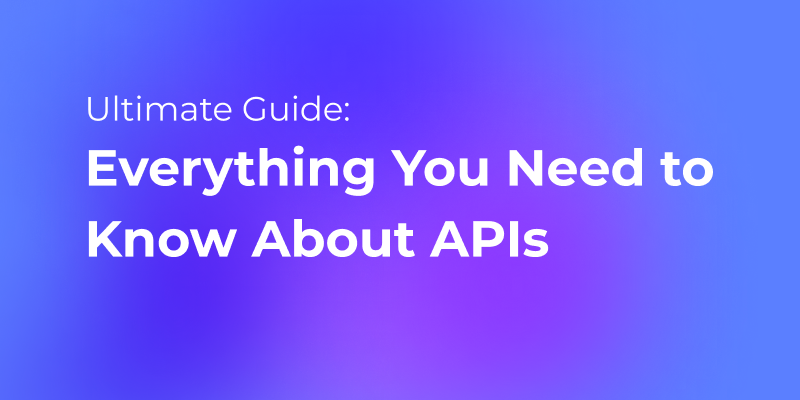Webhooks vs API: Exploring the Differences
Webhooks and APIs differ in their communication models, with APIs relying on request-response interactions for bidirectional data flow, while webhooks operate in an event-driven manner, providing real-time updates with unidirectional data flow triggered by specific events.
In the rapidly evolving landscape of interconnected software applications, developers face the crucial task of choosing the right tools to facilitate seamless data sharing.
Two essential components, APIs (Application Programming Interfaces) and webhooks, play distinct roles in this ecosystem. This guide aims to shed light on their functionalities, differences, and the factors influencing the choice between them.
What are APIs?
APIs serve as portals facilitating the exchange of information and functionality between software services. Acting as interfaces, APIs enable software programs to interact much like a web browser enables users to communicate with a web server. With over 23,000 APIs cataloged on ProgrammableWeb, these tools provide a versatile means for developers to connect applications and unlock creative possibilities.

Key Features of APIs:
- Two-Way Communication: APIs operate through a request-response cycle, allowing two software programs to communicate bi-directionally.
- Data Handling: APIs can execute CRUD operations (Create, Read, Update, and Delete), providing a comprehensive range of actions between applications.
- Versatility: APIs support integration scenarios, from retrieving global epidemiological data to fetching dad jokes, showcasing their universal applicability.
What is Webhooks?
Webhooks, often referred to as "reverse APIs," operate on events rather than requests. They enable one program to send data to another immediately after a specific event occurs. This real-time, event-driven approach makes webhooks a lightweight solution for tasks like real-time notifications and data updates without the need for a full-scale API.
Key Features of Webhooks:
- Event-Driven: Webhooks are triggered by events, allowing for immediate data transmission.
- Ease of Implementation: Setting up a webhook involves a straightforward process, making it less resource-intensive compared to APIs.
- One-Way Data Flow: Webhooks operate in a unidirectional manner, sending data without the need for repeated requests.
The Differences Between API and Webhook:
APIs (Application Programming Interfaces) and webhooks are both tools used in software development to facilitate communication and data exchange between different applications, but they serve distinct purposes and exhibit key differences. Here are the main differences between APIs and webhooks:
| Feature | APIs | Webhooks |
|---|---|---|
| Communication Model | Request-Response | Event-Driven |
| Data Flow | Bi-Directional | Uni-Directional |
| Trigger Mechanism | Explicit Requests by Client | Events Initiated by the Server |
| Real-Time vs. Polling | Requires Polling | Provides Real-Time Updates |
| Ease of Implementation | More Complex | Simpler |
| Use Cases | Bidirectional Communication, CRUD | Real-Time Event Notifications, Lightweight Data Updates |
| Security Considerations | Supports Various Security Measures | May Have Limitations, Initiates by Sender |
Apidog: A powerful API Tool
Apidog stands out as the ultimate API tool, offering unmatched customization options for developers to tailor the interface according to their needs, creating a professional and aesthetically pleasing documentation experience.
This comprehensive tool streamlines API documentation creation with support for multiple programming languages, an intuitive user interface, and versatile import/export capabilities.

Apidog not only simplifies the process of designing APIs with features like endpoint creation and response formatting but also excels in testing, providing automated testing, interactive documentation, and debugging tools.
Additionally, Apidog fosters collaboration through shared environments and documentation management, making it an all-encompassing solution for developers seeking productivity, consistency, and an exceptional user experience throughout the API development lifecycle.
Conclusion
In the dynamic landscape of data sharing, developers must be adept at choosing the right API tools for your work. APIs and webhooks, each with its unique strengths, cater to different use cases.
As software applications continue to evolve and interconnect, understanding the nuances between APIs and webhooks becomes paramount for creating efficient, seamless, and personalized digital experiences.
